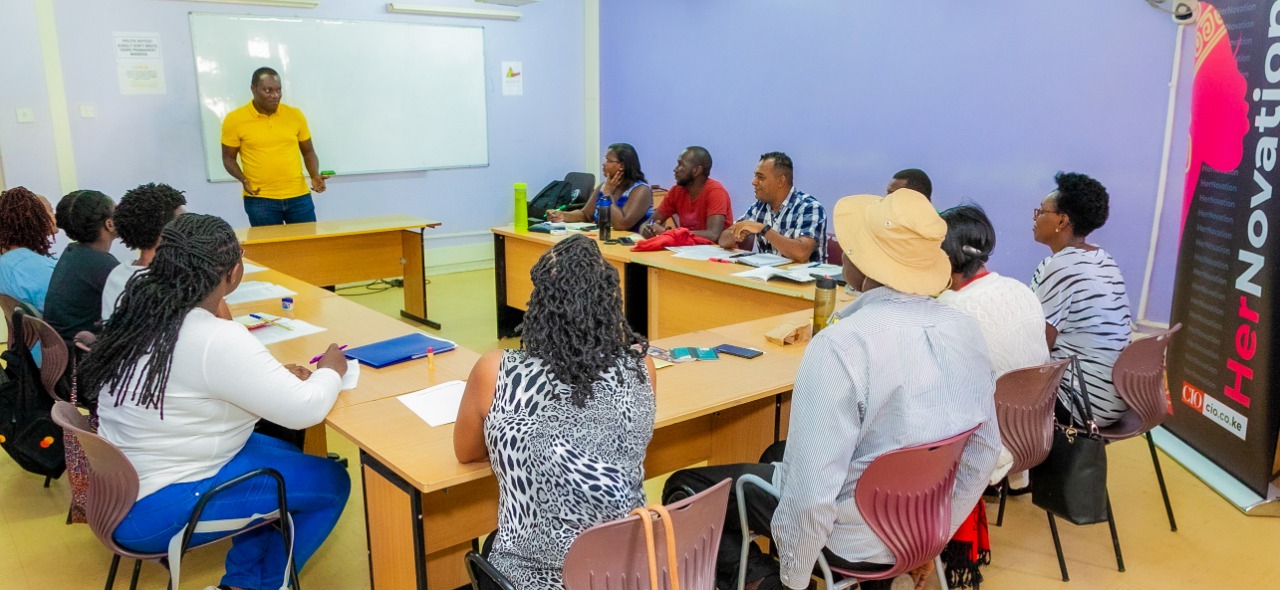advertisement
Simba Toastmasters hone public speaking skills among WIT
Both women and men in technology are generally known to hug servers throughout their careers, in facilitation for the glossy…

Both women and men in technology are generally known to hug servers throughout their careers, in facilitation for the glossy end products seen within their companies, usually with very little if not no time for a social life.
Among the vital aspect of social life that personalities in technology space are believed to close out on is speaking. Whether to a group of people (public speaking) or just to few friends, these geeks are believed to have not much skills for this art.
It is against this backdrop that Simba Toastmasters Club, the Kenyan branch of the global Toastmasters, headed by Pete Osogo, is offering public speaking trainings to women in tech to build confidence while communicating. The training is spread in six weeks with classes held every once a week for 3 hours.
advertisement
Speaking during the inaugural class of year 2020, Pete Osogo mentioned the importance of public speaking as being able to facilitate a promotion at work, giving life to the intended message and building confidence among others.
“Knowing that you can stand in front of people – sometimes complete strangers- and weave your magic, is a powerful elixir for greater confidence,” he said in elaboration of building confidence. He added; “If you find that, rather than enduring public speaking, you actually enjoy it, so much the better. The fact that your personal conversations and interactions may also benefit from public speaking chops, is icing for the cake.”
Osogo, an articulate and passionate pubic speaker, together with other members of his team mentioned the public speaking process and how to deliver impromptu speeches.
advertisement
An eloquent speaker was said to be considerate the following steps;
- Identify nature of the speaking event
- know your audience
- Identify relevant current news
- Brainstorm on ideas
- Make a list of ideas, among others.
The Toastmasters also noted that more often the audience judges the speaker within the first five seconds after which they either tune in or switch off completely. They advised the public speaking class to open speeches with a catchy or attention-getting fact, a rhetorical question (whose answer they know), a quotation or a relevant anecdote. This model they said would ensure that the audience keep a positive attitude towards the speaker and their speech, as they always want to know the facts and statistics (if any) behind the catchy introduction.
“Speeches must be kept short and not more than 20 minutes.Tell the audience what the problem is, what your proposed solution is, and what actions they can take to help,” Osogo added.
advertisement
The team further noted that a good speech should be structured in three sections; introduction, body and conclusion.
The introducing part of the speech was said to be the shortest of the three but that contained the weight otherwise called ‘gist’ of the entire speech. It gives a brief description of what the speaker intends to speak about. It must therefore be very relevant to the body of the speech.
Once the audience’s attention has been capture with a smashing introduction, then follows the body – meat of the speech. The body as noted, takes up most of the speech time, since it’s where the details are elaborated.
“The body should take up about three-quarters of your entire speech time, since this is where you will go into detail about your main points,” Osogo added.
The last part – conclusion – should summarize main points and state a strong thesis. Listeners may not put everything together on their own, so a speaker should make it easier for them by summarizing their argument and reviewing central ideas in the conclusion.
“Remember to finish with a strong and motivating appeal for action and to inspire the audience,” he concluded.